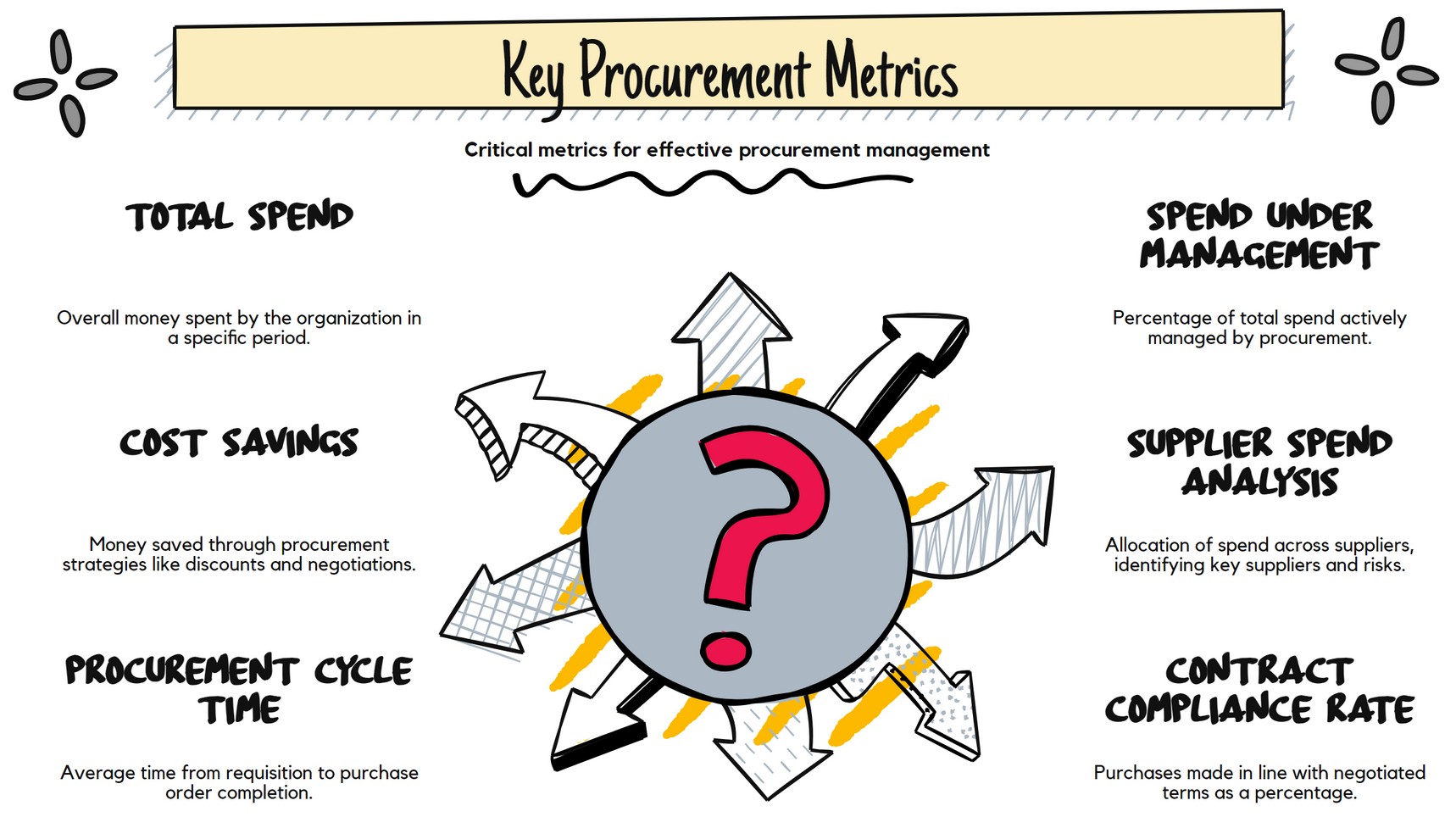Procurement Expenditure Analytics.
TL;DR “Procurement is crucial for organizational efficiency, and AI-powered analytics can optimize costs, enhance supplier management, and improve spending strategies. As businesses grow, they requiremore sophisticated AI tools to manage the increasing complexity of procurement." Written by Ryan Seit. Intern-Research
What is procurement?
Procurement is theprocess of acquiring goods, services, or works from external sources, typicallythrough a systematic approach involving planning, sourcing, negotiation, andpurchasing. It encompasses all activities involved in obtaining the necessary itemsfor an organization to operate efficiently, including identifying needs,selecting suppliers, supplier relationship management, strategic sourcing andensuring timely delivery of quality products and services at the best possiblecost. Procurement aims to optimize the value derived from expenditures whilemaintaining compliance with organizational policies and regulations.
Importanceand benefits of procurement expenditure analytics
Procurementanalytics is crucial for organizations to optimize purchasing, reduce costs,and enhance supplier management. It provides insights into spending patterns,enabling informed decisions and strategic sourcing. By evaluating supplierperformance and compliance, organizations can mitigate risks and ensureadherence to policies. Procurement analytics also supports accurate budgetingand forecasting, improving financial planning. Furthermore, it streamlinesprocurement processes, enhancing efficiency and reducing administrative costs.Overall, procurement analytics transforms procurement into a strategicfunction, driving cost savings, operational efficiency, and competitiveadvantage.
Understanding Corporate Procurement Basics.
Procurement expenditure analytics is thesystematic process of collecting, analyzing, and interpreting data related to acorporation’s purchasing activities.
Key components of procurement expenditureanalytics for corporations include:
1. Data Collection: Gathering data from various sources, such as purchase orders, invoices, contracts, and supplier records.
2. Data Analysis: Using analytical tools and techniques to process and analyze the collected data to identify trends, patterns, and anomalies.
3. Reporting and Visualization: Presenting the analyzed data in a clear and actionable format, such as dashboards, charts, and reports, to facilitate decision-making.
4. Performance Metrics: Evaluating key performance indicators (KPIs) related to procurement, such as cost savings, supplier performance, procurement cycle times, and compliance rates.
5. Strategic Insights: Deriving actionable insights from the data analysis to inform strategic decisions, such as negotiating better supplier contracts, optimizing purchasing strategies, and identifying opportunities for cost reduction.
Strategies to improve procurement efficiency.
To maximize the effectiveness ofprocurement analysis, here are the five most important strategies:
1. Implement AdvancedAnalytics Tools
WhyIt's Important:
● Advanced analytics tools enabledeeper insights into procurement data, helping identify trends, inefficiencies,and opportunities for cost savings.
● Tools like Robobai, SAP Ariba, Coupa, andOracle Procurement Cloud offer robust data analysis and management featuresthat can optimize procurement processes.
ActionSteps:
● Invest in advanced procurementsoftware with strong analytical capabilities.
● Integrate AI and machine learningfor predictive analytics and automation.
2. Conduct Spend Analysis
WhyIt's Important:
● Spend analysis helps organizationsunderstand their spending patterns, identify cost-saving opportunities, andimprove procurement efficiency.
● It provides insights into wheremoney is being spent and how to optimize expenditures.
ActionSteps:
● Regularly perform spending analysisto categorize and analyze spending.
● Use the insights to negotiatebetter contracts and manage budgets more effectively.
3. Develop Key Performance Indicators (KPIs)
WhyIt's Important:
● KPIs provide measurable benchmarksfor assessing procurement performance, helping to track progress and identifyareas for improvement.
● They align procurement goals withoverall business objectives and ensure continuous improvement.
ActionSteps:
● Establish relevant KPIs such ascost savings, procurement cycle time, supplier performance, and contractcompliance.
● Monitor and review these KPIsregularly to gauge effectiveness and make necessary adjustments.
4. Enhance Supplier Relationship Management
Why It's Important:
● Strong supplier relationships leadto better collaboration, improved service levels, and more favourable terms.
● Effective SRM can mitigate risks,enhance innovation, and ensure supply chain stability.
Action Steps:
● Implement SRM strategies to buildand maintain strong supplier relationships.
● Use data from procurement analysisto evaluate and improve supplier performance.
5. Centralize and Cleanse Data
Why It's Important:
● Centralizing and cleansing dataensures accuracy and consistency, which is critical for reliable procurementanalysis.
● High-quality data is essential formaking informed decisions and identifying genuine opportunities forimprovement.
Action Steps:
● Centralize procurement data fromall sources into a single system.
● Regularly cleanse and validatedata to maintain high standards of data quality.
By focusing on these five strategies,organizations can significantly enhance the effectiveness of their procurementanalysis, leading to better decision-making, improved supplier performance, andsubstantial cost savings.
Procurement KPIs and Metrics:

Key Performance Metrics (KPI)
| Metric/KPI | Description | Importance |
| Total Spend | The total amount of money spent by the organization within a specific period. | Provides an overview of the organization's expenditure and helps in budgeting and financial planning. |
| Spend Under Management | The percentage of total spend that is actively managed by the procurement team. | Indicates the effectiveness of procurement management and control over expenditures. |
| Cost Savings | The amount of money saved through effective procurement strategies, including discounts, negotiations, and cost avoidance. | Measures the financial impact of procurement activities and efficiency in reducing costs. |
| Spend by Category | The distribution of spend across different categories such as direct, indirect, capital expenditures, etc. | Helps identify spending patterns and prioritize cost-saving initiatives in specific categories. |
| Supplier Spend Analysis | The amount of spend allocated to each supplier, identifying the most critical suppliers and potential risks. | Aids in supplier management and identifying opportunities for consolidation and negotiation. |
| Procurement Cycle Time | The average time taken to complete the procurement process from requisition to purchase order. | Measures the efficiency of the procurement process and identifies bottlenecks. |
| Supplier Lead Time | The time taken by suppliers to deliver goods or services after receiving the purchase order. | Evaluates supplier performance and reliability, impacting inventory and production planning. |
| Supplier Defect Rate | The percentage of orders that have defects or issues. | Indicates the quality and reliability of suppliers, influencing the overall quality of procurement. |
| Contract Compliance Rate | The percentage of purchases made in compliance with negotiated contract terms. | Ensures adherence to contract terms, reducing risks and improving cost control. |
| Procurement ROI | The return on investment for procurement activities, calculated as the ratio of cost savings to procurement costs. | Assesses the financial effectiveness and value generated by the procurement function. |
| Maverick Spend | The percentage of total spend that is not following established procurement processes or approved suppliers. | Identifies areas of non-compliance and opportunities for process improvement. |
| Supplier Performance Score | A composite score based on various performance metrics such as quality, delivery, and responsiveness. | Provides a comprehensive evaluation of supplier performance for better decision-making. |
| Purchase Order Accuracy | The percentage of purchase orders that are accurate and complete without errors or changes. | Ensures efficiency and accuracy in the procurement process, reducing rework and delays. |
| Spend Variance | The difference between the budgeted spend and actual spend. | Monitors budget adherence and identifies areas where spending deviates from planned budgets. |
| Percentage of Electronic Purchase Orders | The proportion of purchase orders processed electronically versus manually. | Measures the adoption of e-procurement systems and their impact on efficiency. |
| Supplier On-Time Delivery Rate | The percentage of orders delivered on or before the agreed delivery date. | Evaluates supplier reliability and impact on inventory and production schedules. |
| Savings as a Percentage of Spend | The ratio of cost savings achieved to the total spend. | Indicates the efficiency of procurement strategies in achieving cost reductions. |
| Spend per Employee | The average amount of spend per employee, useful for benchmarking and understanding expenditure efficiency. | Helps in comparing and analyzing spend efficiency across different departments or organizations. |
Impact of Firm size on Implementation
1. Objectives andGoals
● Small Business:
○ Focus on basic goals such asreducing costs or improving supplier relationships.
○ Objectives are often less specificand more general.
● Medium-Sized Business:
○ Set more specific, measurablegoals (e.g., reduce costs by 15%, improve supplier performance by 20%).
○ Goals are more detailed andaligned with broader business strategies.
● Large Business:
○ Define comprehensive, strategicgoals (e.g., global cost reduction, sustainability, risk management).
○ Objectives are highly specific,data-driven, and tied to corporate-level strategies.
2. Data Management
● Small Business:
○ Centralize data using spreadsheetsor basic databases.
○ Data management may be manual andless integrated.
● Medium-Sized Business:
○ Use centralized systems such asERP or advanced procurement software.
○ Data integration is moresophisticated and automated.
● Large Business:
○ Implement enterprise-wide datamanagement systems with advanced data warehousing and big data analytics.
○ Highly integrated, automated, andoften include real-time data processing.
3. Tools and Technology
● Small Business:
○ Use affordable or free tools likeGoogle Sheets or Excel for analysis.
○ Limited use of advanced analyticstools.
● Medium-Sized Business:
○ Utilize advanced tools likeMicrosoft Power BI or specialized procurement software.
○ More emphasis on leveragingtechnology for in-depth analysis.
● Large Business:
○ Invest in cutting-edgetechnologies such as AI, machine learning, and blockchain for procurementanalytics.
○ Use sophisticated platforms likeSAP Ariba, Oracle Procurement Cloud, and custom analytics solutions.
4. Spend Analysis
● Small Business:
○ Conduct basic spend analysis toidentify high-cost areas and opportunities for savings.
○ Analysis may be less detailed.
● Medium-Sized Business:
○ Perform detailed spend analysiswith more granular categorization.
○ Use advanced analytical techniquesto uncover deeper insights.
● Large Business:
○ Conduct comprehensive,multi-dimensional spend analysis.
○ Leverage predictive andprescriptive analytics to forecast trends and make strategic decisions.
5. Supplier Management
● Small Business:
○ Build and maintain supplierrelationships on a more personal level.
○ Evaluation of supplier performanceis simpler.
● Medium-Sized Business:
○ Implement Supplier RelationshipManagement (SRM) software.
○ More formal and structuredapproach to evaluating and managing suppliers.
● Large Business:
○ Develop global supplier managementstrategies with multi-tier SRM systems.
○ Focus on strategic partnerships,risk management, and sustainability.
6. ProcessStandardization and Automation
● Small Business:
○ Standardize procurement processesmanually.
○ Limited use of automation.
● Medium-Sized Business:
○ Standardize and automateprocurement processes using e-procurement systems.
○ Greater focus on efficiencythrough automation.
● Large Business:
○ Implement fully automated,end-to-end procurement solutions.
○ Use robotic process automation(RPA) and AI to streamline complex procurement workflows.
7. Training andDevelopment
● Small Business:
○ Provide basic training onprocurement practices and tools.
○ Training may be less formal andmore on-the-job.
● Medium-Sized Business:
○ Offer comprehensive trainingprograms for staff on advanced tools and best practices.
○ More structured and formaltraining approach.
● Large Business:
○ Develop extensive, continuousprofessional development programs.
○ Invest in specialized training foradvanced analytics, technology use, and strategic procurement.
Summary Table:
| Aspect | Small Business | Medium-Sized Business | Large Business |
| Objectives and Goals | Basic goals, less specific | Specific, measurable goals aligned with business strategy | Comprehensive, strategic goals tied to corporate strategy |
| Data Management | Spreadsheets or basic databases, manual management | Centralized systems (ERP), integrated and automated | Enterprise-wide systems, advanced data warehousing |
| Tools and Technology | Affordable/free tools (Google Sheets, Excel) | Advanced tools (Power BI, specialized software) | Cutting-edge technologies (AI, ML, blockchain) |
| Spend Analysis | Basic analysis, less detailed | Detailed analysis with advanced techniques | Comprehensive, multi-dimensional analysis |
| Supplier Management | Personal relationships, simpler evaluation | SRM software, structured management | Global strategies, multi-tier SRM, focus on partnerships |
| Process Standardization | Manual standardization, limited automation | Standardized and automated processes | Fully automated solutions, RPA, AI |
| Training and Development | Basic, informal training | Comprehensive, formal training programs | Extensive, continuous professional development |
These differences highlight the varyinglevels of complexity and resource investment needed as businesses scale fromsmall to medium to large, requiring more sophisticated systems and strategies.
Author:
(1) ###[ Author: Ryan Seit https://www.linkedin.com/in/ryan-seit31020/ ]








